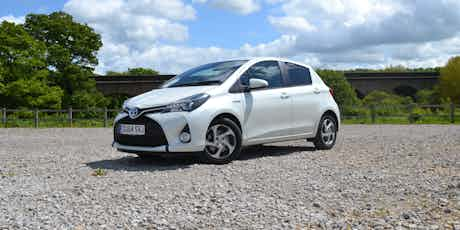Hybrid driving tips with the Toyota Yaris Hybrid
June 25, 2015 by carwow staff

If hybrid ownership is something you’re giving serious thought to, are there any concessions you’ll need to make to your driving style to eke out the claimed fuel economy figures?
We’ve tried the Yaris Hybrid supermini, built by Toyota – one of the pioneers of hybrid tech – and offered five top tips on how to make the most of it.
1 – Plan Ahead

This advice should apply to any type of driving purely for reducing the risk of accidents, but for a hybrid vehicle it will also vastly improve fuel consumption results, too. The work can start even before the journey has begun using the sat-nav to plan the optimal route for road and traffic conditions.
Once on the move, planning can improve mpg figures further. If traffic is stationary ahead, there’s no point in barrelling up to it and hammering on the brakes at the last second – instead, coast up to it gently – chances are they’ll have moved away before you’ll need to come to a complete halt. The more you slow down, the more power (and therefore fuel) you’ll use to get back up to speed again.
2 – Get familiar with the car

The Yaris Hybrid is a clever car, and provides the driver with a wealth of information to maximise its potential. The most important thing to keep an eye on is the energy usage dial located in the instrument panel.
The dial is split into three sections – Charge, which will occur when decelerating, particularly while braking; Eco, when cruising or under steady acceleration; and Power, when you need to make full use of the petrol and electric motors while overtaking or tackling a steep hill. Paying attention to what the dial is doing will show you when you’re using to much or too little throttle.
3 – Maximise the time spent in full-electric mode

In the Yaris, that means cruising at a steady 30-40mph to get the best out of the battery power. Accelerate up to that speed – with the aid of the petrol motor if necessary – and a quick lift off the throttle pedal switches back to full-EV mode.
It works well in practice, with only one minor criticism – we think the electric motor could do with a touch more power. When accelerating in a quiet area all is well, but away from traffic lights or while among faster moving traffic, it can’t quite keep up with other cars without needing to call for help from the petrol engine.
4 – Drive smoothly

Accelerating and braking harder than required will use more fuel. The Yaris isn’t a sporty car, and the impressive refinement – especially during the hushed EV mode – puts you in the mood for steady driving anyway.
Once moving at higher speeds, it’s easy to keep up momentum, too. Despite running on skinny 165mm-wide eco tyres, the Yaris has plenty of grip in the corners, and the brakes are strong.
5 – Don’t carry pointless trinkets in the car

If your car is constantly filled with random odds and ends, they’ll all add unwanted weight to the car. Extra weight means extra power to get the car moving, which harms fuel economy.
However, should you need to carry stuff, the Yaris is quite practical. At 286 litres, the boot isn’t as roomy as the one you’ll find in the back of the Skoda Fabia, but it’s still among the best in the class. The rear seats don’t fold completely flat though, so larger items can be a little awkward to transport. Passenger space is also reasonable when compared to its rivals.
So does eco-driving work?

On our two-week test, taking in motorways, city driving, plus numerous runs along A-roads and twisty B-roads, we averaged precisely 60mpg. We’re sure that some diesel superminis can achieve that but, around town, the Yaris achieved over 65mpg, which many rivals would struggle to beat, especially once the cheaper cost of petrol is factored in.
Any rivals?

The only other hybrid supermini on sale in the UK is the Honda Jazz Hybrid. It’s more roomy and practical than the Toyota, but it’s also marginally slower, less economical and more expensive to buy. Beyond that, there are any number of diesel superminis which are worth a look, particularly if you drive high annual mileages. We’d recommend the Skoda Fabia and the Peugeot 208 for their class-leading fuel economy figures.
What next?
If you’re taken with the Toyota Yaris Hybrid, pop it into our Yaris configurator to see what discounts are available. For more options, check out our deals page.















